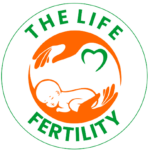Introduction
In Vitro Fertilization (IVF) is the most powerful tool in the arsenal of Assisted Reproductive Technology (ART), offering a scientifically precise pathway to parenthood. Yet, for prospective parents, the question of “What are our chances?” remains paramount. The truth is, the IVF success percentage is a highly individualized metric, influenced not by chance but by a complex interplay of biology, lifestyle choices, and clinical execution.
Achieving a live birth probability with IVF hinges on understanding the variables you can control and those you cannot. This guide, written from the perspective of clinical expertise, will dissect the most critical factors affecting IVF success rate—from the foundational biology of the egg to the critical skills involved in the final embryo transfer technique.
By gaining a deeper appreciation for these keys, you can move from anxiety to empowerment, allowing you to maximize your potential for a successful IVF treatment and navigate your fertility specialist consultation effectively.
I. The Foundational Key: Maternal Age and Egg Quality
The single, most statistically dominant predictor of IVF success rate is maternal age. This reality is driven by the inevitable, predetermined biology of the female reproductive system: a finite supply of eggs (quantity) and the degradation of their genetic health (quality) over time. Understanding this biological timetable is the first and most crucial step in the fertility journey support.
The Dual Decline: Quantity and Quality
Women are born with their complete, lifetime supply of potential eggs—the ovarian reserve. This reserve gradually diminishes, a factor measured clinically by two primary markers:
- AMH levels (Anti-Müllerian Hormone): AMH is a hormone secreted by the small, developing follicles. Its level in the blood correlates strongly with the remaining supply of eggs. Low AMH levels indicate a diminished ovarian reserve, which predicts a lower yield of oocytes retrieved during ovarian stimulation.
- Antral Follicle Count (AFC): This count is derived from a transvaginal ultrasound, tallying the small, resting follicles (antral follicles). A low antral follicle count (AFC) confirms a reduced reserve and provides a snapshot of the potential eggs available for that cycle.
While egg quantity is important for maximizing the number of attempts available, the decline in egg quality is far more critical for determining the final IVF live birth rate. Egg quality refers to the oocyte’s chromosomal integrity.
As maternal age increases, the cellular machinery responsible for dividing chromosomes correctly (meiosis) becomes increasingly error-prone. This leads to a higher rate of aneuploidy—embryos with an abnormal number of chromosomes.
Success Rate Trajectory
The impact of this age-related decline on IVF success rates by age is profound:
- Under 35: The live birth rate per blastocyst transfer often exceeds 50-60%.
- Ages 38–40: Rates drop significantly, typically resting between 20-30%.
- Ages 41–42: Rates fall dramatically to 10-20%.
- Over 42: Rates are typically below 10%.
This steep drop is why a fertility specialist consultation will focus heavily on maternal age. For women facing this limitation, donor eggs offer a medically sound path, as the resulting success rates align with the donor’s age, bypassing the age-related decline in egg quality entirely.
II. The Essential Key: Embryo and Sperm Quality
The viability of the embryo is the true bottleneck of the IVF process. The resulting embryo quality is a product of both the egg’s genetic health and the sperm’s contribution.
Assessing Embryo Quality
After fertilization, embryos are monitored closely for five to six days until they reach the blastocyst transfer stage. The embryologist uses sophisticated morphological embryo grading systems to predict implantation potential:
- Expansion: How much the embryo has grown and expanded.
- Inner Cell Mass (ICM): The cells that will form the fetus (the higher the grade, the better).
- Trophectoderm (TE): The cells that will form the placenta (the higher the grade, the better).
These grades offer a strong correlation with the implantation rate. However, morphology cannot guarantee genetic health. This is where Preimplantation Genetic Testing (PGT) comes into play.
The Role of PGT-A
PGT-A (preimplantation genetic testing) involves biopsying a few trophectoderm cells from a blastocyst. This test screens the embryo for aneuploidy (abnormal chromosome count). Transferring a genetically confirmed euploid (chromosomally normal) embryo dramatically increases the IVF success percentage, particularly in women over 35 or those with a history of recurrent miscarriage.
Using PGT-A optimizes the cumulative live birth rate across multiple cycles because it ensures only the best embryos are transferred, avoiding cycles that would have inevitably resulted in failure or miscarriage due to genetic issues. This is a crucial element when optimizing how to increase IVF success rate.
Addressing Male Factor Infertility
The male partner’s contribution is frequently undervalued among the factors affecting IVF success rate. Male factor infertility is present in approximately 40% of cases, and sperm quality is paramount. Standard checks review sperm count, motility (movement), and morphology (shape).
When sperm parameters are low, the procedure shifts to ICSI (intracytoplasmic sperm injection), where a single, high-quality sperm is directly injected into the egg.
A deeper consideration is Sperm DNA Fragmentation (SDF). High levels of DNA damage in the sperm head are strongly associated with poor embryo quality, reduced fertilization, and higher miscarriage risk, even when ICSI is used. Specialists often recommend addressing SDF through lifestyle changes, antioxidant supplements, or surgical procedures before IVF to significantly improve outcomes and increase the live birth probability of IVF.
III. The Medical Key: Underlying Conditions and Reproductive History
Beyond the quality of the egg and sperm, the patient’s existing health profile and detailed reproductive history provide critical prognostic information. The causes of IVF failure are often rooted in these pre-existing conditions.
Uterine Receptivity and Endometrial Health
Even a perfect embryo needs a perfect landing pad. The condition of the uterus is a major factor. The uterine lining (endometrium) must be thick enough (endometrial thickness typically $>7$ mm) and possess a “trilaminar” pattern to signal optimal endometrial receptivity. Conditions that interfere with this include:
- Uterine fibroids: Large fibroids or those that protrude into the uterine cavity can physically disrupt implantation and must often be surgically removed before transfer.
- Uterine Polyps: Small, often benign growths that can act like an IUD, preventing implantation.
- Hydrosalpinx: A blocked, fluid-filled fallopian tube. The fluid can leak into the uterus, creating a toxic environment that ‘washes out’ the embryo. In these cases, the tube must be clipped or removed surgically prior to transfer.
Specific Infertility Diagnoses
The underlying diagnosis heavily influences the complexity and potential success of the treatment:
- Tubal Factor Infertility: If the only issue is blocked tubes, IVF works well because it entirely bypasses the fallopian tubes, leading to a relatively high IVF success percentage in otherwise healthy women.
- Endometriosis: This can cause chronic pelvic inflammation, which may negatively impact egg quality and endometrial receptivity. Management may require pre-IVF suppression or surgery.
- PCOS (Polycystic Ovary Syndrome): Patients with PCOS often have an excellent ovarian reserve (due to high antral follicle count (AFC)), but their eggs can sometimes be immature or suboptimal in quality. Careful, bespoke Controlled ovarian stimulation (COH) protocol management is essential to prevent Ovarian Hyperstimulation Syndrome (OHSS) while maximizing mature oocytes retrieved.
- Unexplained Infertility: When no clear cause is found, the IVF success rate can be surprisingly good, as the process typically resolves a minor, unknown issue in fertilization or early development.
Learning from the Past
A patient’s reproductive history serves as an indispensable roadmap.
- Duration of Infertility: Longer periods of duration of infertility often correlate with lower success rates, suggesting deeply entrenched underlying issues that may require more aggressive or nuanced approaches.
- Prior Live Births: A history of a prior successful pregnancy (parity) is a very positive prognostic sign, confirming the patient’s capacity to carry a pregnancy to term.
- Recurrent Implantation Failure (RIF) or Miscarriage: Multiple failed transfers or recurrent miscarriage are often the causes of IVF failure. These cases necessitate a comprehensive review, often involving PGT-A, advanced uterine imaging, and specialized endometrial receptivity testing to find the missing piece of the puzzle.
IV. The Procedural Key: Clinic Expertise and Laboratory Standards
The “where” of your treatment—the IVF clinic expertise—is one of the most significant, yet often least appreciated, factors affecting IVF success rate. The quality of the embryology laboratory and the skill of the clinical team are non-negotiable elements for achieving IVF treatment success.
The Unseen Foundation: The Embryology Lab
The embryology laboratory is where life is created and nurtured. Its standards directly impact embryo quality and viability.
- Air Quality and Environment: Impeccable standards for temperature, humidity, and air quality (HEPA filtration) are essential. Contaminants can damage developing gametes and embryos.
- Embryologist Skill: The embryologist is arguably the most critical person in the entire process. Their skill in delicate procedures like ICSI (intracytoplasmic sperm injection), PGT biopsy, and cryopreservation (freezing and thawing) directly determines the survival and health of the embryos. A high-quality lab will have consistent, high-level embryo grading standards.
- Culture Media: The precise nutrient solutions (culture media) used to grow embryos from Day 1 to the blastocyst transfer stage must be meticulously managed and appropriate for the stage of development.
The Precision of Protocols and Transfer
A top-tier IVF clinic’s expertise involves tailoring every step to the individual patient.
- Controlled Ovarian Stimulation (COH) Protocol: This is the process of using medications to encourage the ovaries to produce multiple mature eggs. The specialist must select the correct protocol (e.g., antagonist, agonist, or flare) and dosage based on the patient’s maternal age, AMH levels, and antral follicle count (AFC). A perfectly customized protocol maximizes the number of high-quality oocytes retrieved.
- The Embryo Transfer Technique: The transfer of the embryo into the uterus is the culmination of the entire cycle and is one of the final, critical factors affecting IVF success rate. This delicate, ultrasound-guided procedure requires the physician to place the embryo precisely at the fundal-midline position of the uterine cavity. A difficult, traumatic, or non-optimal placement can significantly depress the implantation rate and lead to causes of IVF failure. The physician’s experience and skill here are paramount.
Understanding Cumulative Success
Patients should always ask about the cumulative live birth rate (CLBR). While the IVF live birth rate for a single cycle is informative, the CLBR—the probability of achieving a live birth after three complete cycles (including all frozen transfers)—is a much better indicator of a clinic’s true long-term effectiveness. For many younger patients, the CLBR often exceeds 65%, highlighting the importance of persistence in the fertility journey support.
V. The Controllable Key: Lifestyle Factors and Environment
While you cannot change your age or genetics, you have complete control over a set of lifestyle factors that can significantly move the needle on your IVF success percentage. This is where patients can actively participate in optimizing their chances, and it is a central topic in any fertility specialist consultation.
Body Mass Index (BMI) and Metabolic Health
Body composition for both partners is a critical determinant of hormonal balance and gamete health.
- Impact on Women: Obesity (BMI $\ge 30$) is consistently linked to lower clinical pregnancy rate (CPR) and live birth probability IVF. Excess weight causes metabolic disturbances (such as insulin resistance) that negatively alter the follicular fluid where eggs mature. It also creates a state of chronic, low-grade inflammation that can reduce endometrial receptivity. Studies indicate that for every five-unit increase in BMI above the normal range, the live birth rate can drop by 5-7%.
- The Actionable Change: The best way to improve IVF chances related to weight is achieving a healthy weight prior to starting stimulation. Even a modest 5-10% reduction in body weight can restore ovulation and improve hormonal balance, profoundly increasing the success of the Controlled ovarian stimulation (COH) protocol and subsequent implantation.
Smoking, Alcohol, and Environmental Toxins
These factors are non-negotiable inhibitors of IVF treatment success.
- Smoking: Tobacco toxins prematurely age the ovaries, resulting in a diminished ovarian reserve and a lower yield of oocytes retrieved. Female smokers face up to a 30% lower pregnancy rate.
For men, smoking drastically reduces sperm quality, count, and motility, and severely increases DNA damage, compounding the challenge of male factor infertility. The definitive what to do before IVF transfer regarding smoking is cessation for at least three months. - Alcohol and Caffeine: Heavy drinking is linked to disrupted hormonal profiles. While opinions vary on trace amounts, complete abstinence from alcohol and strict moderation of caffeine (under 200 mg/day) are commonly recommended during the stimulation and implantation phases to create the optimal environment.
Nutrition and Supplementation
The dietary approach is part of how to increase IVF success rate. A diet rich in antioxidants, whole foods, healthy fats (like Omega-3s), and sufficient Vitamin D and Folic Acid supports mitochondrial health in the egg and improves sperm quality.
Stress Management and Emotional Health
The fertility journey support often includes strategies for managing stress during IVF. While stress itself is not believed to directly cause infertility, chronic, unmanaged stress elevates cortisol levels, which can indirectly impact hormonal balance and uterine blood flow.
Integrating relaxation techniques (mindfulness, gentle yoga), seeking counseling, and maintaining a strong support system are vital lifestyle changes for IVF that promote a receptive and optimal internal environment, aiding endometrial receptivity and overall well-being.
VI. Final Considerations: The Holistic View
Ultimately, the factors affecting IVF success rate must be viewed holistically. It’s not just one metric, but the dynamic interaction between them.
A patient with slightly lower ovarian reserve (low AMH levels), but who is under 35 and has optimized their lifestyle factors (healthy BMI, no smoking), can have a much higher live birth probability IVF than a younger patient with high AMH who has significant underlying conditions like untreated hydrosalpinx or unaddressed male factor infertility.
Choosing your clinic is part of this holistic approach. When deciding, always ask for the IVF live birth rate data specific to your age group and diagnosis, and inquire about their laboratory standards and protocols for personalized care. This is the surest way to determine IVF is right for me at that specific center and to ensure you receive the highest level of fertility clinic expertise.
VII. Conclusion: Partnership and Empowerment
Navigating the complexities of IVF requires persistence, informed decision-making, and, most importantly, a strong partnership with your medical team.
While biological drivers like maternal age and genetics are fixed, achieving a high IVF success percentage is profoundly influenced by meticulous fertility clinic expertise, the precision of the embryo transfer technique, and your personal commitment to positive lifestyle factors.
By focusing on maximizing embryo quality and optimizing endometrial receptivity, you transform from a passive recipient of treatment into an active participant, dramatically increasing your potential for a successful and joyful outcome.
What is the overall average IVF success rate?
The success rate of IVF varies widely, but current data (2021-2022) suggests the live birth rate per embryo transfer is around 50-60% for women under 35 using their own eggs. This rate is an average and should always be viewed alongside personal factors affecting IVF success rate.
Can lifestyle factors truly change my chances of success?
Absolutely. While biological factors affecting IVF success rate, like age and genetics, are fixed, lifestyle factors are controllable. Maintaining a healthy BMI, quitting smoking and alcohol (which can reduce implantation rates by up to 50%), and managing stress all create a better uterine environment and contribute positively to embryo quality and overall success.
How important is the fertility clinic’s expertise?
Fertility clinic expertise is crucial. The quality of the embryology lab, the experience of the clinical team in selecting personalized stimulation protocols, and the skill during the embryo transfer procedure are all major factors affecting IVF success rate. A well-equipped clinic with high standards of care directly impacts the development and viability of the embryos.
Does the cumulative success rate increase with multiple cycles?
Yes. The cumulative success rate—the probability of achieving a live birth after multiple IVF attempts—is significantly higher than the rate for a single cycle. For women under 35, the chance of a live birth after three cycles can often exceed 65%. This highlights why persistence is a key factor in a patient’s reproductive history.
How does age truly affect the IVF success rate?
Maternal age is the most significant determinant. The decline in IVF success rate is tied to egg quality and diminishing ovarian reserve.
Under 35: Highest rates, often 50-60% live birth per embryo transfer.
38–40: Rates drop significantly, averaging around 20-30%.
41–42: Rates fall dramatically, often 10-20%.
For women over 40, using donor eggs (which transfers the success rate to the age of the donor) dramatically increases the chance of success.




